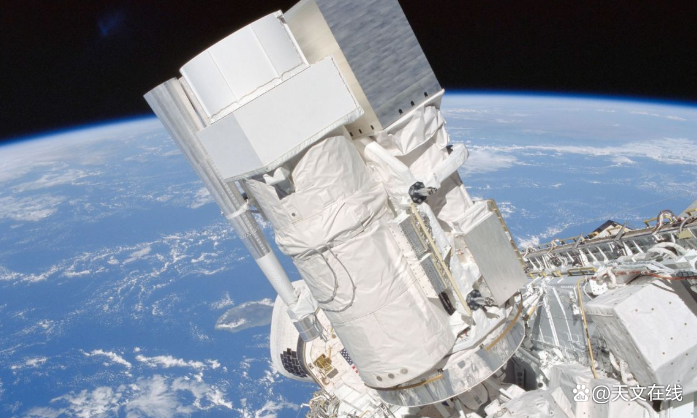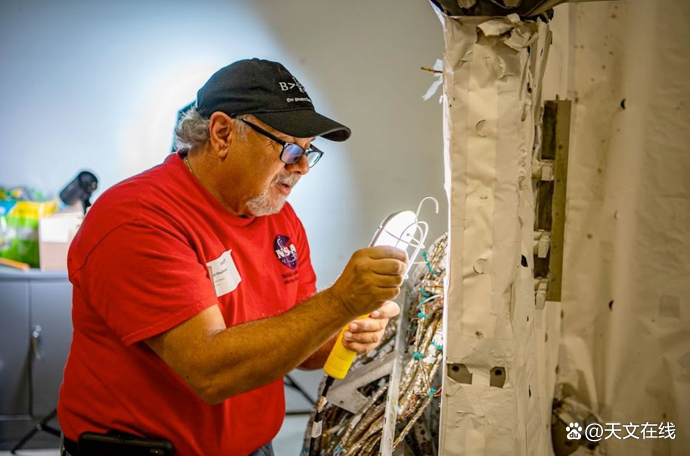Aerospace Mission: Celestial recovery plan, aerospace aircraft equipment and reuse
Author:Astronomy online Time:2022.08.28
Behind the aerospace mission of Astro 1 and series celestial body
In December 1990, during this photo of the STS-35 mission, in this photo taken through the deck windows at the rear of the Columbia Aircraft, Astro1 (Astro 1) the valid load background is the blue and white earth. In 1995, the equipment that was flying again on the STS-67 was now open to the public after being repaired.

In December 1990, during this photo of the STS-35 mission, in this photo taken through the deck windows at the rear of the Columbia Aircraft, Astro1 (Astro 1) the valid load background is the blue and white earth. In 1995, the equipment that was flying again on the STS-67 was now open to the public after being repaired.
(Picture source: National Aerospace Bureau)
In the same year in deploying the Hubble Space Telescope, NASA launched the first of the two aerospace aircraft, dedicated to studying astronomy and celestial physics. Today, 30 years have passed, and the hardware of the "Astronomical No. 1" mission (and the follow -up mission "Astronomy 2" in 1995) is being recycled, re -combined and repaired for museum display.
Astro Space Repair Project is a commercial sponsors-US Aerospace and Rocket Center and the Smithson Museum-supported public welfare project located in Henzville, Alabama. (And STS-67) The target of the task hardware to return to the flight state is steadily advanced. Many people participating in this project are retired NASA employees who have equipped the launch with effective loads.
"In 1985, when I was preparing to launch ASTRO-1, I was the first person to install these boxes," said Mike Haddad, a former NASA mechanical engineer and a member of the repair project, said in an interview with NASA. Hardad refers to the remote collection device. This device is used to send signals from the aerospace hardware to the aerospace aircraft and then return to the earth.
"The same program is required after 35 years? Just like going home," he said.
Comparison of front and rear: The picture above is the cross constellation before the restoration of November 2020. The bottom is a cross that was repaired in the US space and rocket center in March 2021.

Comparison of front and rear: The picture above is the cross constellation before the restoration of November 2020. The bottom is a cross that was repaired in the US space and rocket center in March 2021. (Image source: Celestial Repair Project)
The original hardware is combined
The valid loading compartment of the ASTRO spacecraft is fixed by two trays developed by the Space Lab developed by the European Space Administration (ESA). The effective load includes three ultraviolet telescope installed on the aluminum frame. The component was then installed on a three -axis and universal section platform, called a spatial laboratory instrument pointing to the system. The system provides the accuracy and stability required by imaging astronomical objects.
The celestial repair plan has restored 90%of the original hardware.

The three UVs were returned to John Hopkins University, the University of Wisconsin Madison, and the main researchers at the NASA Godedd Space Flying Center. Smithy claims that this direction system is part of the National National Aerospace Museum.
"Under normal circumstances, when flying hardware returns to the earth, NASA will modify or refurbish it to use other tasks, or remove the components for other purposes."
In unique or "special mission" works, many of them are auctioned through the government's remaining sales. This is the fate of the fourth telescope on Astro-1-Broadband X-ray telescope (BBXRT). Just five years ago, its owner was still selling it on the Yicu platform. (BBXRT, which has only been flying once, is installed on an independent direction system (a section pointing system), which is fixed on the own structure of the aerospace aircraft effective load cabin.)

The 8 -foot 8 -foot (2.4 meters by 2.4 meters) and 3000 pounds (1360 kg) of aluminum cross were discovered by accident in a auction room in North Alabama. Similarly, a optical sensor package for the optical sensor package to help fix the telescope in a waste field in Tettiville in Florida.
"It is also in the original container," said Scott Vangen, the person in charge of the repair project and the effective load expert of the Astro-2 task.
At the US Aerospace and Rockets Center in Henzville, Alabama, Mike Hardad, a retired former US Astronautics engineer, checked the cross constellation during the renovation process.

At the US Aerospace and Rocket Center in Henzville, Alabama, the retired NASA engineer Mike Hardard checked the cross constellation during the renovation process. (Image source: Celestial Repair Project)
Divided method
Although recovered, the cross shape is poor. In the working area provided by the U.S. Space & Rocket Center (U.S. Space & Rocket Center), dozens of civil servants and contractor volunteers are peeling off the rotten insulation blankets, carefully cleaning the parts with a brush, and cleaning other components with pressure.
The team also obtained the help of students from NASA HUNCH (high schools jointly created by NASA) students from NASA HUNCH (high school), which has been awarded by NASA HUNCH. The project is a practical hardware design and manufacturing technology taught in more than 200 schools across the country. There is also a task program log that helps to repair, which comes from the heritage of the aerospace engineer of the previous project. Hundreds of detailed drawings and schemes were listed in the log. These drawings and schemes decomposed each component. The archives administrators of the Marshall Aerospace Flight Center found these drawings and provided it to the project team after scanning.
"If you have no documents, it is a bit academic to save hardware," Fan Gen said. "We need to re -combine the fragments according to the original picture."
After 4 months of hard work, the "first stage" of the restoration project was completed, and it was displayed at the American Cosmic Rocket Center in April.

The next stage will be the first of the optical sensor bags that are reinstalled and repaired and the first of the three telescopes. Then, the remaining two ultraviolet telescopes will complete the display with them.
Fix ASTRO Cross shape will be displayed by the American Space Rocket Center as early as 2023, until the space laboratory component prepared by the Smith exhibition -including the Steven F. Udvar -hazy -hazy -hazy The center is in northern Virginia.
"Effective loads and deployment devices like Hubble's free flights have rewritten scientific textbooks, but they will never return to the earth, and will never be examples of targets we can achieve," said Fan Gen. "With Astro, our grandchildren and great -grandchildren will be able to touch the hardware that fly to space and be included in the history book."
By: Robert Z. Pearlman
Fy: jane
If there is related content infringement, please contact the author to delete after the work is released
Reprinted, please obtain authorization, and pay attention to maintaining integrity and indicating the source
- END -
Science and Technology Experience Officer | The "Gold Coin" social vortex of the APP: Users spend money to talk and fall into the sincere "trap"

Picture source: Oriental ICReporter/YinjingEdit/Liu MinjuanProducer/Yang HuiA few ...
Ask the sky to take off and ask the sky!

At 14:22, July 24, 2022, Beijing time, the Long March 5 of the Wentian Experimenta...